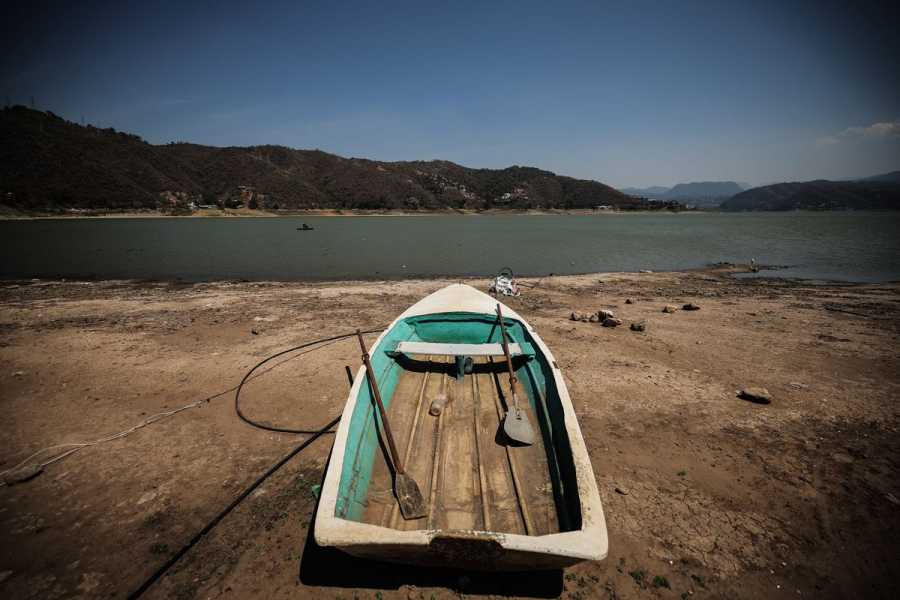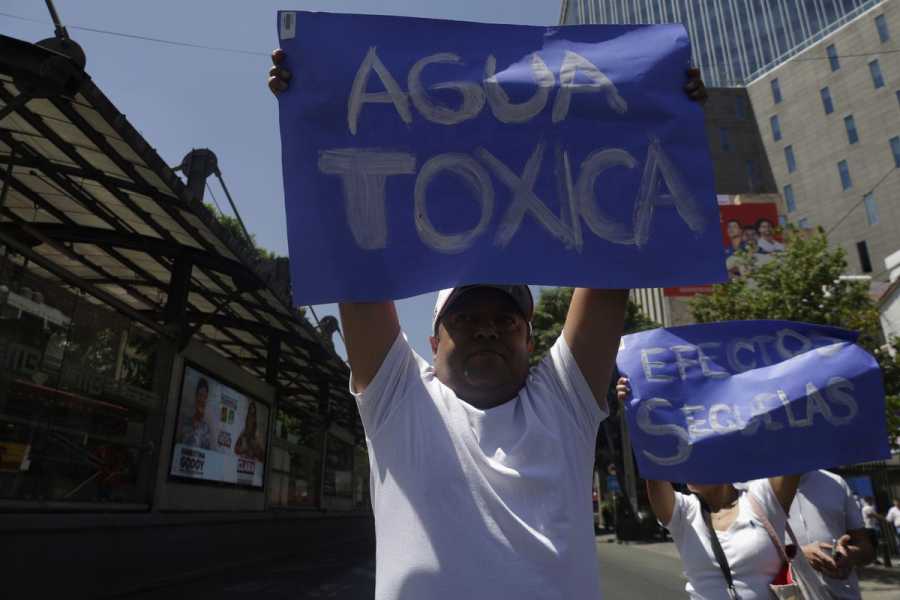Mexico City is staring down a water crisis. It won’t be the last city to do so.

Mexico City is being threatened by a water crisis after the main reservoirs remain under 40 percent of their full capacity due to low rainfall, geography, and lack of infrastructure. Hector Vivas/Getty Images Caroline Houck is senior editor of news at Vox, where she oversees the daily flagship newsletter and helps direct news coverage.
Mexico City is parched.
After abysmally low amounts of rainfall over the last few years, the reservoirs of the Cutzamala water system that supplies over 20 percent of the Mexican capital’s 22 million residents’ usable water are running out.
“If it doesn’t start raining soon, as it is supposed to, these [reservoirs] will run out of water by the end of June,” Oscar Ocampo, a public policy researcher on the environment, water, and energy, told my colleagues over on the Today, Explained podcast.
Already, some households receive unusably contaminated water; at times, others receive none at all. It’s stoking tensions over obvious inequities: Who gets water and who doesn’t?
The crisis is also leading Mexico City to siphon more from the underground aquifers on which the city sits, a decision that’s not just unsustainable without replenishment but also causes the ground to sink — at a rate of almost five inches each year, Ocampo said.
While many factors that led to this moment might be specific to Mexico City, or CDMX (including the Spanish colonists’ decision hundreds of years ago to drain the lake on which the city originally sat), or this moment in time (see: El Niño exacerbating droughts), the bigger issue is not.
Bogotá, Colombia, is rationing water amid a drought that has pushed reservoirs to “historically low” levels. And you might remember Cape Town staring down its own Day Zero crisis in 2018. A few years earlier, Sao Paulo, Brazil confronted a similar situation.
This all raises big questions. Is this the fault of climate change? Rapid or unsustainable development? Other human errors?
Try all of the above.
“There is an element of climate change that’s contributing to these conditions that we find ourselves in, but there’s also a very strong human-built environment element — a governance element, a politics element, and a mismanagement element of both the natural and the human environment,” Victoria Beard, an expert in international development planning and urbanization at Cornell University, told me.
So … what do we do?
Solutions, near term
The most obvious: Use less water.
“Typical US cities — without a lot of lawns — it’s about 100 gallons per day of water use,” Howard Neukrug, who directs UPenn’s Water Center, told me. “In the best cities in the world, they are down to about 25 gallons of water use per capita per day. It’s a pretty big difference.”
And in “Day Zero” situations, that can make a difference. During Cape Town’s crisis, “they had a lot of consumer awareness … ‘Day Zero’ itself is a campaign to draw attention to this issue so that people can understand what’s happening,” Samantha Kuzma at the World Resources Institute told my podcast colleagues.
“People were changing the way they were using water, they were conserving it more. And that did help create a longer runway until Day Zero — but ultimately it is the rain that helped alleviate that crisis.”
vox-mark
Sign up for the newsletter Today, Explained
Thanks for signing up!
Check your inbox for a welcome email.
Email (required)
Oops. Something went wrong. Please enter a valid email and try again.
By submitting your email, you agree to our Terms and Privacy Notice. You can opt out at any time. This site is protected by reCAPTCHA and the Google Privacy Policy and Terms of Service apply. For more newsletters, check out our newsletters page. Subscribe
What needs to happen is conservation — or, really, resource management — at a much more systemic level.
One of the most important steps, experts said, is better wastewater recycling — making it more of a “circular economy,” Neukrug said.
“In the past, the water was really cheap,” he told me. So industries would “just use it once through and then put it out to the sewer.”
“But now they not only have to pay for their water, they have to pay for their stormwater runoff and pay for the wastewater. [They’re] figuring out how to continuously loop this water.”
Another clearly actionable idea: Fix leaky pipes. “A lot of our water is lost along the way with leaky systems, like leaky pipes that’s lost between when it leaves the treatment plant and when it arrives in your faucet,” Beard said. In Mexico City, Ocampo said some 40 percent of water is lost. But it’s a problem all around the world, including the US.
And then there’s the need to rethink our relationship with not just the water system itself, but urban planning more broadly.
We need to “do a better job of protecting natural environments that allow our aquifers and our groundwater to recharge,” Beard said, and within our cities, a better job building them “out of materials that allow our groundwater to recharge. We don’t have to smother every inch of our city with these impervious surfaces.”
There are places that do all this well: Singapore, for example, relies on Malaysia to import most of its fresh water, has developed phenomenal wastewater recycling systems, embraces its wetlands, and fights to not lose water at any step.

When water is cut off or intermittent, it can become contaminated. Residents of the Benito Juarez district in Mexico City, seen here on April 9, 2024, were protesting a gasoline-like smell in the water in their homes. Gerardo Vieyra/NurPhoto via Getty Images
This isn’t going away
In a study of 15 cities in sub-Saharan Africa, South Asia, and Latin America, Beard and a colleague found that in 12 of them, households were connected to city water infrastructure, but it didn’t work 24/7.
“One thing that people don’t realize, for many, many urban people around the world, Day Zero is every day,” she said.
We’re not going to become less urban. And climate change is going to keep exacerbating this.
Higher temperatures drive higher water use — and not always in the ways we think. The agricultural industry uses the vast majority of the world’s water, and when temperatures skyrocket, it requires more.
In cities, Neukrug pointed out, the “biggest users of water is electricity generation — and the biggest user of electricity [in turn] is water systems and the pumps … and when it’s drying hot, you’ve got bigger energy demands” and water demands, feeding an escalating cycle.
These concerns are most pressing in developing countries without the infrastructure or the sunny-but-water-strapped locales people can’t seem to stop moving to (looking at you, recent Arizona transplants).
But it isn’t something anyone can fully ignore: Even the famously rainy Pacific Northwest faced hydropower challenges last year amid a drought.
In short: We need to stop taking water for granted and manage it better. There are debates about how to best do so — do you treat water like a commodity and bring in the private sector, do you treat it like a public good and re-municipalize the service from top to bottom — but all of them require political will and money.
“When I started working on development issues in urban areas, we didn’t have universal access to primary education,” Beard said. “But no country in the Global South now would say, ‘Oh, that’s too expensive. We can’t do it.’ They just did it.”
“And I think that we need to think about water and sanitation in this way,” she added. “It is a public health, a human right, and an equity issue. And there needs to be that political will.”
This story originally appeared in Today, Explained, Vox’s flagship daily newsletter. Sign up here for future editions.
Sourse: vox.com






